 134Likes 134Likes
 |

14 Sep 2014
|
 |
Registered Users
Veteran HUBBer
|
|
Join Date: Jan 2006
Location: Yuma, Arizona, USA
Posts: 548
|
|
Epic!! Thank you for letting us into your journey!!  
I currently commute on a 200cc Chinese Enduro, and, since I live on the US/Mexico border, have contemplated riding to Ensenada or San Felipe, but was worried about how/if the bike would hold up for a few hundred miles in a foreign country.
Your friend Mike showed me I have nothing to worry about (I already took care of the chain) 
|

14 Sep 2014
|
 |
Registered Users
Veteran HUBBer
|
|
Join Date: Nov 2010
Location: Santa Cruz, California
Posts: 316
|
|
Quote:
Originally Posted by yuma simon

Epic!! Thank you for letting us into your journey!!  
I currently commute on a 200cc Chinese Enduro, and, since I live on the US/Mexico border, have contemplated riding to Ensenada or San Felipe, but was worried about how/if the bike would hold up for a few hundred miles in a foreign country.
Your friend Mike showed me I have nothing to worry about (I already took care of the chain)  |
Yes man, do it! 
|

14 Sep 2014
|
 |
Registered Users
Veteran HUBBer
|
|
Join Date: Nov 2010
Location: Santa Cruz, California
Posts: 316
|
|
|
The Highs and Lows of Kilimanjaro

I’ve underestimated the difficulty of wilderness situations before and suffered for it, but even with that experience to draw from I still can’t seem to stifle my overconfidence in how far, high, and long I can go when I get moving.  On the third day of our climb, at 6 AM after 5 hours of going straight up, most of my swagger had been swaggered out. In fact, I lost it about 1000 feet down trying to scramble across a rock face in the dark. The kicker is that we weren’t even climbing Kilimanjaro; rather, it is Killi’s little brother, Mt. Meru that was providing this early morning wind sucking exercises. For all of the effort of the ascent, we would hardly have any bragging fodder. Who the hell ever heard of Mt. Meru anyway?
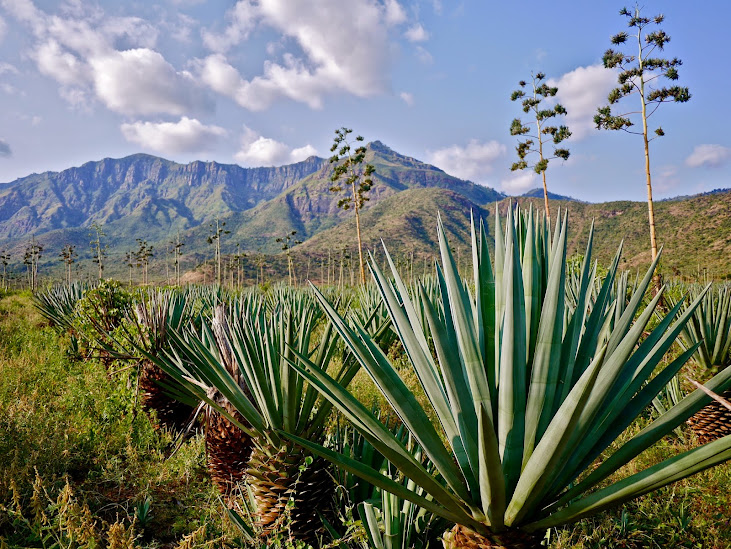
If you’ve ever been backpacking in the wilderness of the American West, the Kilimanjaro region of Tanzania may not be what you expect if you don’t do your homework very well. I don’t do my homework very well. It’s kind of like a Disneyland ride version of mountaineering: it’s expensive, it’s as safe as something inherently dangerous can be made to be, tremendous efforts are taken to maximize your comfort, and there are lots of people there.

Jamie and I shopped around in the town of Moshi for a way up the tallest mountain on the African continent and the best price that we could come up with, not taking advantage of any of the cooks or porters was far beyond our budget on a long trip like this one. We’d been prepared that this was a possibility but hoped that by actually showing up we could find a cheaper alternative. Elimination of Kilimanjaro as an option brought our enthusiasm to a low point. We we went to the neighboring park to find out about climbing Mt. Meru, which in terms of sheer altitude pales in comparison to Kilimanjaro. Fortunately, the price to climb it is similarly diminutive, about one-quarter the cost of the Kili climb, which would cover our park fees and the cost of the required ranger. We’d heard great experiences about he climb, so we were stoked again and ready to head into the mountains.

Mt Meru is about 15,000 feet high. As a point of reference, that’s roughly 500 feet taller than Mt. Whitney in the Sierra Nevada, however the ascent is about 10 thousand feet in total rather than the 6 thousand required to climb Whitney from Whitney Portal. I’ve done lots of backpacking at similar altitudes in the Sierra Nevada, so I wasn’t daunted by the distance or altitude gain for this trip. And we certainly wouldn’t be making use of the multiple porters that organizers were nearly insistent that we needed to have to ensure a successful climb. We would carry and cook our own food, just like we always do back home. Call it backpacker pride. There are huts along the climb, so we didn’t even need to carry a tent or sleep mats, just sleeping bags, clothing and food. Piece of cake! Needless to say, after long distance trips into true wilderness back home, a sizable chip was developing on my shoulder about this whole experience.

My shoulder chip grew when we showed up on the first day and found that amongst 10 people headed up, Jamie and I were the only ones not using porters. One German couple had 5 porters. My pack was no larger than anyone else’s and was full of our cooking gear and food for two people. I couldn’t imagine what in the world everyone thought they might need up there. I found out later that one guy was carrying his 15’’ MacBook Pro in his pack. Just about everyone was wearing massive Everest-capable hiking boots. I was wearing my Keen sandals and someone asked if the porters were carrying my boots. I thought I would look funny wearing motorcycle boots with shorts, so I would do the climb in sandals. They’re comfy. And oh so stylish.

We met our ranger at the park gate, a mountain savvy fellow called Oswald, and off our merry band of hikers went, meandering though lush forests and meadows at the foot of the ridge that we would ascend during the following two days.

Oswald toted his rifle along to keep any wilderness critters such as buffalo and elephants at bay, which roamed freely about the park. While not normally a danger, if taken unawares at an inopportune moment or position, one of these creatures could become aggressive.
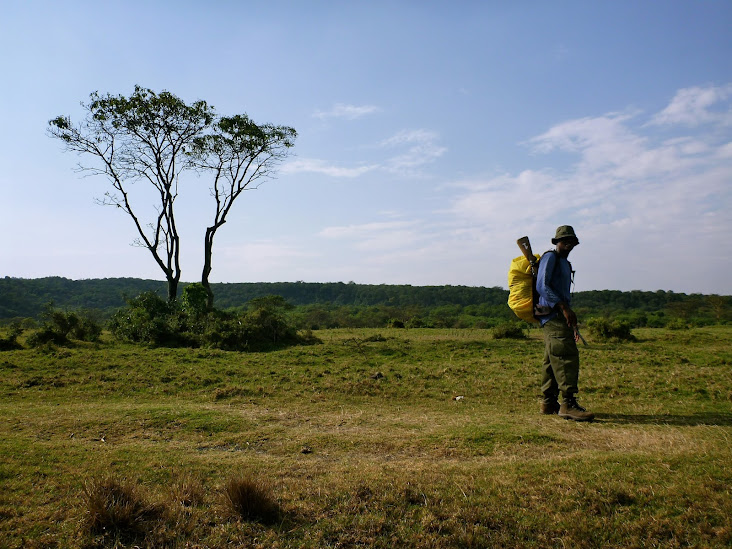
As we walked, I became increasingly annoyed at our maddeningly slow pace set by Oswald at the front of the pack that kept us in one tight bunch. I hate having someone right on my heels and staring at the back of someone’s head while walking in the wilderness. Additionally, I find it difficult and even more tiring to hike at a rate that isn’t my natural pace, even if it is slower. Eventually, Jamie and I got a head of the pack and felt as though I’d just burst out of traffic congestion in Dar Es Salaam.

After walking ahead of the pack for half of the second day, we saw something on the trail that gave us pause. The leg of a buffalo lie severed from its owner with blood drippings that looked like they were nearly still wet, but no sign of the rest of the buffalo. Frequently, you could observe buffalo trails with fresh tracks on both sides of the trail, so it was obvious that they were quite active on these lower slopes of the mountain. When Oswald arrived he studied the leg and surmised that the hyenas had been at the poor buffalo the night before and dragged the rest of him off into the bush.

As we all stared dumbly at the buffalo leg, Oswald shared that two months a tourist had been gored badly by a lone buffalo before a ranger was able to get a shot off at him. Imagining Hemingway’s Green Hills of Africa depiction of the danger of coming upon a buffalo in the bush, I swallowed my hiking ego and rejoined the pack, walking right behind the guy with the gun. Further along the trail we found some scraps of bushbuck pelt. By careful examination of a sandy part of the trail, Oswald made out a fresh leopard print and figured that he was the predator that brought the bushbuck to its end.

Porters passed us with massive loads balanced on their heads: wicker baskets or a tarps wrapped with rope that were full of food, cooking gas cylinders, and the full size packs of the other hikers. They raced ahead of the tourist, wearing jeans and sandals and carrying three times the weight of any of us. Jamie and I enjoyed a lunch of cheese, canned tuna, plantain chips, and apples and by evening we were more than ready for a double helping of pesto pasta to replenish calories and salt burned during the day’s climb. The huts had bunk beds and made for pure sleeping luxury while on the trail, which made it all the more difficult to rise at 1 AM to begin our push to the summit.

We spent hours in the dark climbing and either scrambling along rock faces that seemed to drop off into an abyss of darkness, or walking up a slope of scree that had you sliding half a step back down for every step up. My hands were very cold and I tried to keep them in my pockets when I didn’t need them for scrambling or holding an additional light for Jamie. I was wearing two pairs of socks, so my toes were cold, but still ok. By 6 AM, some light began to glow from the opposite side of the face we were climbing in the direction of Kilimanjaro. The sun was on the way up, and I couldn’t tell from the glow how long we had before it would crest the horizon. I was feeling strong still, but Jamie was nearly spent. She was breathing very hard trying to get enough oxygen to her muscles for every step up. Less than 100 feet from the summit, we even talked about stopping the ascent, but every time we stopped, after a short rest, she went a bit further, until we finally emerged to find Kilimanjaro poking its head from beneath its blanket of clouds as the first rays of morning sun turned the sky to fire.

We stared at the scene in front of us and finally laughed.

After savoring the sight for a while and having a rest it was time to begin the climb down. There was a storm forecast for the afternoon and we had 10,000 feet to descend before the sun reached the opposite horizon. The scrambling sections that we’d sweated on the way up now required due caution, but were no cause for concern as they’d been in the black of night, and the scree sections were a joy to bound down, sliding with every step and letting gravity do some of the work. When we reached the hut that we’d slept in the night before, we had a rest and made some soup and oatmeal to replenish some of the calories that the intervening 9 hours had transformed into altitude and elation. The soup was absolutely terrible, with clumpy bits of the powder that wouldn’t unclump to mix properly, but we drank every drop and thought it was fantastic.

By the time we were nearly to the bottom it was 5:30 PM and our thighs were on fire. Our legs would shake whenever we stopped moving. We’d been hiking for 16 hours on 4 hours of sleep with little more than an hour’s rest. I think this was the largest vertical decent that I’ve ever done in a single go. The flat meadow at the bottom was a joy to walk through. It’s hard to describe the wonderful flatness of that meadow. A perfectly level surface in equilibrium with gravity, with hardly any effort required from your leg muscles to keep you from toppling forward. A lone giraffe watched us and sauntered along a nearby watering hole. A family of baboons went about their evening business with the dominant male playing sentinel near the trail where we walked while the young ones tumbled about, wrestling one another and making quick runs out to get a closer look at us. Each time they would run out a bit further, testing their courage. Jamie and I got on the bike and rode back to Arusha, ready to sleep for a week.

In Tanzania, things happen riding in traffic about every 5 minutes that back home would warrant an exasperated tale upon arrival at your destination. Here though, a friendly nudge here and there in the fray of it all is quite alright and doesn’t indicate any aggression. Intersections are a comedy of chaos with street signs utterly ignored and everyone seeing just how far they can push before they are physical stopped from forward motion. No one gets upset, this just how it works. You get in the habit of using other cars as blockers when making a turn on a busy road, shielding you from other motorists that know you’re there but just don’t care. So it was upon our return to Arusha, but given my fatigue from the summit and decent of Mount Meru that day, it was all that I could do to keep the bike upright in the traffic maelstrom.
After a day of rest, we left the busy streets of Arusha behind us and rode westward across the windswept plains towards the N’gorogoro Crater, which was said to have the highest density of wildlife of any park in Tanzania. Even though Jamie had a harder time getting up the mountain than I did, I was now sore as could be and hobbling around while Jamie seemed perfectly fine. She giggled watching the comical spectacle of me gingerly hoisting myself on and off of the bike. The plains were full of Masai tending to their cattle, the warrior tribe known for their adherence to a traditional nomadic lifestyle. Their bright red and cobalt blue blanket garb punctuated the grassy landscape. Not from from N’gorogoro, one particular Masai tribe are said to be the last living functional hunter-gatherers.

At N’gorongoro Crater we found a continuation of the sky-high costs we’d found at Kilimanjaro. To enter the crater would cost ten times as much as the other safaris that we’d been on elsewhere, so we rode away without seeing a single furry critter. These places were just catering to a different audience than moto hobos. Riding away from the crater we fought a strong headwind that buffeted us around like crazy. I knew that our gas mileage was going to be suffering, and didn’t know if we would make it back to Arusha on what we had in the tank. Just as I was thinking that it was stupid to have set off without gassing up something moved at the edge of my peripheral vision, something big. I turned my head to the left to find that it was not one big thing that I saw moving but lots of big things. A massive herd of wildebeest was bolting for the road, making these direction changes that just looked fantastically fast for such big animals. The movements looked erratic, but somehow they all stuck together like a flock of birds in flight. They bounded lithely over the road then zigged and zagged their way into the distance as we stood by the by to bike and smiled. The wind shook our helmets sitting on the mirrors and whipped Jamie’s hair around. It wasn’t the canned safari with piles of lions and cheetahs dancing with rhinos that we imagined at the N’gorongoro Crater, but we found it pretty spectacular all the same.
|

17 Sep 2014
|
 |
Registered Users
Veteran HUBBer
|
|
Join Date: Jan 2006
Location: Yuma, Arizona, USA
Posts: 548
|
|
It is interesting that you find these costs on a continent that is supposed to be (at least in stereotype) among the poorest of places. I know that obviously the laws of economics are at play, with enough people with cash paying these extravagant prices to see the 'good stuff' of Africa, but it seems kind of weird at the same time.
I remember reading someone's travel blog here on HU several years ago they encountered the same kind of thing while motorcycle traveling in Africa. I don't remember the country in particular, but it had many resorts catering to Hollywood types, or wannabe Hollywood types costing several hundred $'s a day. It might have been the same country that Angelina Jolie was adopting her kids from which does not come to mind, but most likely factored in someone's business plan 
|

27 Sep 2014
|
 |
Registered Users
Veteran HUBBer
|
|
Join Date: Nov 2010
Location: Santa Cruz, California
Posts: 316
|
|
Quote:
Originally Posted by yuma simon

It is interesting that you find these costs on a continent that is supposed to be (at least in stereotype) among the poorest of places. I know that obviously the laws of economics are at play, with enough people with cash paying these extravagant prices to see the 'good stuff' of Africa, but it seems kind of weird at the same time.
I remember reading someone's travel blog here on HU several years ago they encountered the same kind of thing while motorcycle traveling in Africa. I don't remember the country in particular, but it had many resorts catering to Hollywood types, or wannabe Hollywood types costing several hundred $'s a day. It might have been the same country that Angelina Jolie was adopting her kids from which does not come to mind, but most likely factored in someone's business plan  |
Seems like its really just the places that have been established for decades as THE African Safari type destinations. Namibia, Botswana, Zambia haven't been as established, so while there are high dollar options for those places, they aren't the only options. Places like N'gorogoro crater are just for a different type of traveler. Fair enough, and you hope that the proceeds aren't going in too few pockets...
|

27 Sep 2014
|
 |
Registered Users
Veteran HUBBer
|
|
Join Date: Nov 2010
Location: Santa Cruz, California
Posts: 316
|
|
|
Suitcase Surfers of Kenya

Jamie and I saddled up and rode west from the N’gorongoro crater, headed for the coast and hoping to find a wave to ride somewhere in Kenya.  We rode through the quintessential African landscape of the Serengeti: red earth underlay the grassy yellow Savannah dotted with the umbrella-like Acacia trees providing shade for weary travelers, human and animal alike.


Where we stopped for the night we found our usual friendly neighbors ready to join us for an evening beverage.

 The ugliest surfboard in Africa
The ugliest surfboard in Africa
We arrived at the coast and found a remote beach-side camp spot. We even had a living room and an oil-burning lamp this time around courtesy of the completely empty lodge. In fact, just about everywhere we stopped was completely empty as the headline-making security issues of the last few years have kept the tourists away from Kenya. Most businesses are barely hanging on, and the and local village folk who staff the resorts and lodges are all on reduced hours or no longer have jobs. We walked along the shoreline of a lonely beach as fishing boats drifted listlessly in the wind and as the local soccer game progressed on the low tide hard packed sand in the distance.
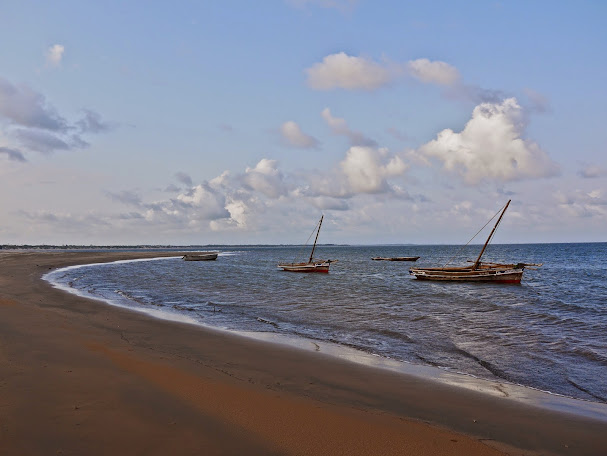


Where we were camped most of the swell energy was blocked by offshore reefs, so we motored northward to find some little waves breaking on a beach near a town called Malindi Bay. We found a cheap little guesthouse to crash in with big airy rooms, high ceilings, and balconies overlooking the main street. They even let me put my park my bike inside the restaurant overnight to make sure it was safe. Mailindi Bay is filled with Italian expats and tourists, which seems a bit of an oddity since I’ve hardly met Italians anywhere in Africa. Apparently tour groups have been coming to the place since the 80’s, growing in numbers every year until the recent terrorist attacks. Lots of Italian expats makes for fantastic food and we enjoyed many a good meal in the beach-side restaurants.

I wandered around on the beach and asked a couple of young guys if they had every seen anyone riding the waves. I met Akhmed, who was about 17 years old by the look of him and of mixed African-European parentage, with dark curls, mocha coloring and wearing day-glo Ray-Bay knock–off sunglasses. He knew a guy with a surfboard that I could borrow and so I jumped on the back of the Indian-made 125cc bike with Akhmed and his friend and off we sped 3-up, through tiny streets and alleyways and to find a surfboard. He was going so fast that he nearly brought an unsuspecting old woman doing her washing along with us for the ride. When we found the one guy in town who had a surfboard, he proudly produced 7 ft single fin board that was painted over with yellow acrylic paint on top of the fiberglass. The thing was so heavy it had surely been broken in half and stuck back together, probably more than once. Near the nose of the board there was painted a skull and the text ‘Liquid Shredder’. It was the ugliest surfboard I have ever seen, but if Kelly Slater can ride a wave on a door and a coffee table, I should surely be able to find some trim on this beast. I was ready to shred.

The three of us rode off again, me in the third position on the bike holding my Shredder. Akhmed didn’t reduce the speed much to account for the added bulk of the board and some of the Shredder’s yellow paint was left on the corner of a building. There was no wax on the board and the best I could do was find some candles and drip the wax on the deck as they burned. The waves were so small and messy it didn’t matter much what I was riding anyway. I scratched into a few waves and pumped down the line before hitting the lip a it closed out.

Jamie came out and shredded a few waves too.

After awhile, some kids turned up down the beach carrying either half of a suitcase which turned out to be their innovative wave riding craft. I can’t imagine a better example of the spirit of surfing than two little kids in Kenya riding waves on a suitcase. You can find surf stoke in plenty of unlikely places when you spend a bit of time looking. I love it.
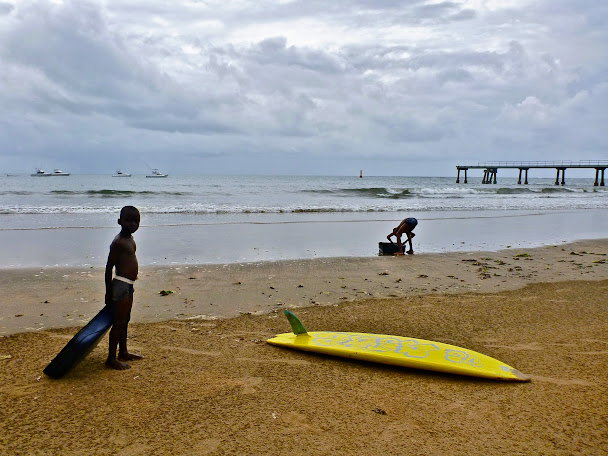 A Jungle Rendezvous
A Jungle Rendezvous
Jamie and I spent a week in Malindi Bay enjoying great pizza and dodging rainstorms that flooded the streets. With all of the rain, we were happy to be holed up in our little guesthouse rather than in the tent. We’d been enjoying the reprieve from big cities, but it was finally time to head to head to Nairobi to apply for visas to the countries ahead. Our route took us on some dirt tracks to avoid passing through Mombasa where the rain had created some red mud pits.

Jamie got off of the bike a couple times as I powered through puddles of unknown depth.
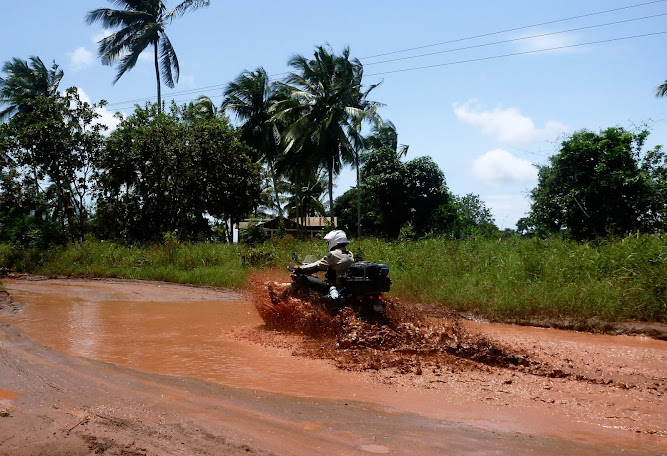
By the end of the muddy sections Dyna Rae had gotten a proper mud bath. She doesn’t mind though, it improves her complexion. I would have traded a few more miles of muddy roads to avoid some of the Mombasa highway, which was fully packed with trucks running containers from the port at Mombasa to Nairobi. There were hardly any passenger cars at all, and certainly no other motorbikes. The trucks were incredibly slow moving, even on flat ground, which normally wouldn’t be such a problem since we can just whiz past on the bike. The trouble was that the line of trucks seemed nearly continuous in both directions of the two-lane road. When we did manage to bust ahead of a line of trucks into a section of diesel dust free air, we were constantly in danger from oncoming trucks passing one another. They could see us coming but they didn’t care, and we were run off of the road into at least a dozen times before the journey was finished with varying degrees of danger.

The overlander sanctuary known as Jungle Junction in Nairobi was a welcome sight for our road weary eyes. As soon as we saw the stacks of motorbikes and 4x4’s dotting the compound we knew we were in the right place.
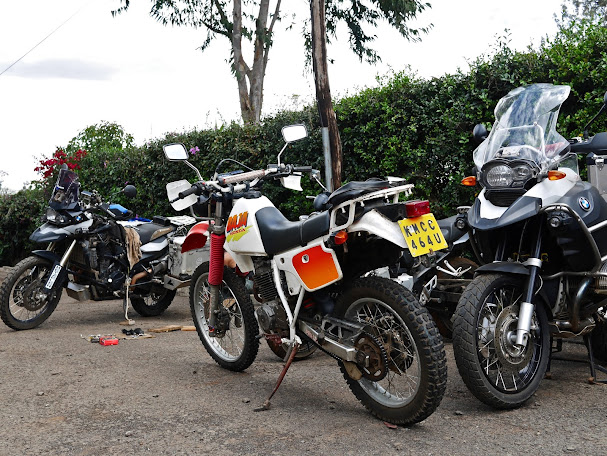
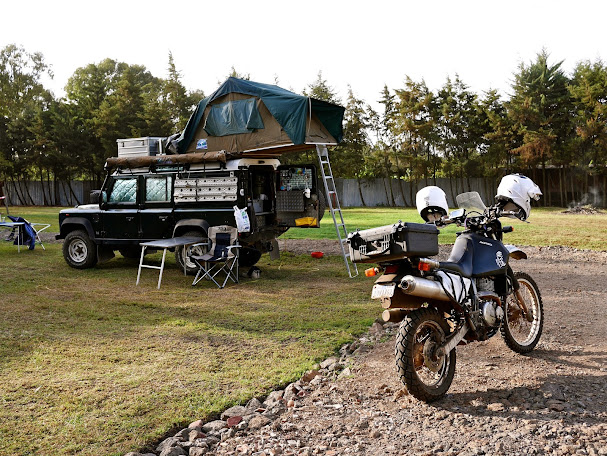
We even found Dyna Rae’s big brother – the 750cc DR Big, rarely spotted in the wild.

Jungle Junction has been in Nairobi since 2003 and it has become a bit of an overlanding institution. It was a great place to meet with other travelers to discuss all things overlanding: obtaining visas, border crossings, road conditions, water crossings. Speaking to folks who have come south from Europe yields invaluable information about the difficult border crossing between Sudan and Egypt and how to get across the Mediterranean from Egypt to Turkey. Ferry runs have been sporadic over the last couple of years and it seems like the operators and status changes from month to month. We heard a nightmarish tale of getting stuck in a shipping yard for a week from a British couple in a Toyota land cruiser. My hope is that getting across some water is easier with a bike than with a truck, as it usually is.

Chris, the German proprietor of Jungle Junction, runs a mechanics shop right out of the place, so it was to perfect time to get to some well overdue moto work done. The Junction has a real workshopy vibe, with everyone fiddling with bikes strewn about the place. Even the reception desk lives in a converted garage space. We set up our tent in the front yard and I tore into the bike.

Once again I found the valve clearances not to have budged a micron since their last inspection 8 thousand miles ago. I changed the oil and spark plugs then set about fixing some other niggling bits. The rubber of my grips had begun to disintegrate into a sticky mess, so I found some replacements; too bad they say Husqvarna on them instead of Suzuki. Sorry girl.


Over time and under a heavy load, my side stand had slowly bent so that the bike was often was often leaning way over on its side. I got the side stand off and the in-house mechanic Samuel set to work cutting my stand in half to insert a 1.5 inch piece of steel that would lengthen it. After multiple checks on the lean angle of the, Samuel welded the stand back together and Dyna Rae was standing tall and proud again.

The rain and humidity of the west coast journey had taken its toll on Dyna Rae, with rust and bolts that just didn’t want to move anymore. I’d known about them for some time now and have just put off dealing with them for fear of twisting off a bolt head as I’d done when my surf rack bolts had seized up. I bathed them in WD-40, gave plenty of whacks with a hammer to try to scare them out, but still managed to twist off a couple of bolt heads. At least this was the best place to do it, right next to a full mechanics shop. Samuel helped extract the broken bolts, we cut some new bolts from spares around the shop, and soon enough Dyna Rae was feeling and tight and toned.
I even got my newly air conditioned boots resoled with some used tires.
 The visa game
The visa game
After roaming around southern Africa the last four months, where everyone seemed happy to allow us in for a visit, we’d become rather complacent about our research. We simply assumed that we’d be able to obtain visas for countries north of Kenya while in Nairobi, but found little hospitality at the local embassies. Ethiopia sent us packing immediately.
Ethiopia: Why didn’t you obtain a visa in your home country?
Me: I haven’t been there for a year. You must have some provision for folks traveling overland as we are.
Ethiopia: You can obtain a visa on arrival at the airport in Addis Abeba
Me: But we’re riding a motorcycle
Ethiopia: You can obtain a visa on arrival at the airport in Addis Abeba
From their response to our request, you might think that we were the first people ever to arrive in the country not on an airplane. Before they would issue a visa some guy called Isbaruk, who is the head of the entire Ethiopian Immigration department in Addis Ababa, had to tell them it was OK. They had no phone number or email address for this character. They couldn’t even tell us his last name. But Isbaruk has to say its OK, or no visa. Strike 1.
Sudan wasn't very keen on giving us a visa either. They told us that we needed a letter from the American Embassy explaining what we are doing in Sudan before they would issue a visa. The weren’t very keen on remodeling either.

All American embassies now have a policy that require an appointment, which may take weeks to schedule. Unfortunately the Nairobi online appointment system wasn’t functioning, so we had nothing to do but show up at the embassy and try to explain our situation. After being told by several people that they could offer us no help, we finally got in front of the vice consul, Daniel, who was incredibly helpful. He certified affidavits about what we were doing in both Ethiopia and Sudan and even sent a message to his colleague in Addis asking them to contact the ministry of foreign affairs there.
We rode back over to the Sudan embassy, hopeful of our prospects, but on our return, the story had changed. They would need to get approval from Khartoum before they could issue a visa. The dialogue went something like this:
Us: How long will that take?
Sudan: I have no idea
Us: You must be able to give me some idea. A week? A month?
Sudan: Sorry, no idea
As far as I can gather, the chilly reception probably has to do with the United States’ involvement in the recent war and the creation of the new nation state, South Sudan. In any case, that felt like strike two in the visa game.
Given the uncertainty of obtaining our Sudanese visa in Nairobi, we set to researching where else we might get it. It seemed that if we had an Egyptian visa in our passport, the Sudanese embassy in Ethiopia may be inclined to issue us a transit visa. That is of course assuming of course that we can even get into Ethiopia. We motored across town and submitted our application and documents at the Egyptian embassy thinking that this should be a piece of cake. American tourists go to Egypt all the time! Later that evening, we received an email explaining that since we weren’t Kenyan residents, we couldn’t apply for a visa in Nairobi, and that we could obtain a visa on arrival at the airport in Cairo. It seems that most embassy folks in Nairobi think that we are on a flying type of motorbike. This was nearly strike three, but we persisted and explained our trip to the consul the following Monday, trying to make it sound as fascinating as possible. He was very friendly and finally relented to issue us a visa.

We were glad to be on a bike for all of the running around on the terribly congested streets of Nairobi. There was often plenty of dirt road shoulder or walkway available to plod right past the gridlocked traffic. One day after we’d had some rain, we were riding the dirt path alongside the road, when we hit a mud bog, my tires spun, and we dumped the bike. It was the first spill with Jamie and I both on the bike, and thankfully neither bike nor riders were damaged. I picked the bike up and we continued down the same path. The cars beside us never even moved during the whole episode.
While we were waiting for something to happen in visa world, we went to check out the Nairobi National Park, which sits barely outside of the city boundaries. It’s truly a surreal scene to behold the zebra, giraffe, buffalo, wildebeest, ostriches, and rhino milling about the savannah with a cityscape in the background. This park must be unique in the world, having such animals living so close to a large city.


After two weeks we still had no response from our compadre Daniel in the American Embassy even after repeated emails. We’d been to the Ethiopian embassy 4 times, but hope for obtaining a visa locally was running out. Unfortunately, that was the good news. Sudan flat out rejected our visa application, with no reason given. We were desperate to make some progress on the Ethiopia front, since South Sudan is the only other route option traveling north. South Sudan sounds a bit lawless and in danger of going the way of Somalia and becoming the next failed state in Africa, so it is not exactly an ideal travel destination at the moment. We made contact with the Ethiopian embassy in Washington D.C. and yesterday we chose the less-than-ideal option of sending our passports there via DHL in the hopes that they will issue us a visa. And so now we wait in Nairobi, without passports and hoping that nothing goes awry with our precious documents whizzing halfway around the world to someone who cares a lot less about them than we do. We've got two massive countries in front of us who just don't seem to want to meet us. The road ahead is unclear and this trip is starting to feel rather adventurous again.
|

12 Oct 2014
|
 |
Registered Users
Veteran HUBBer
|
|
Join Date: Nov 2010
Location: Santa Cruz, California
Posts: 316
|
|
|
Out of Nairobi
 Hey folks - Jamie has taken up the notebook and put together our latest update - enjoy!
Hey folks - Jamie has taken up the notebook and put together our latest update - enjoy!

After making contact with the Ethiopian Embassy in Washington, DC and receiving the green light to send our passports there for visas, we thought we were home free. We heard that DHL provided a visa service “all the time” for other overlanders. We thought that we would simply tell DHL when the passports were ready to be picked up and they would pick up the passports. A few days after the passports arrived in Washington D.C. we called to make sure everything was in order and the Ethiopian Embassy informed us that the passports would be ready to be picked up on Thursday. Great! On Thursday we went to DHL and told them that the passports were ready to be picked up. That was when we had the first clue that this final leg of the process was not going to be as easy as we had hoped. DHL wanted reference numbers that would have to be obtained from the Ethiopian Embassy. We wanted the passports to start their journey back as soon as possible and we knew that getting a reference number meant another phone call. The Ethiopian Embassy in Washington does not make it a regular practice to pick up a ringing phone nor do they respond to their emails so we considered ourselves lucky to get that Thursday pick-up communication. After two nights up till midnight trying to call the embassy, we informed the DHL staff here in Kenya that we couldn’t get those numbers and that in our experience, they wouldn’t be able to contact the embassy staff, but we needed the passports picked up. Each day that passed we told DHL to pick up the passports, but they wouldn’t do it without calling the embassy first. Since the Ethiopian embassy never pick up the phone, our passports were never picked up and the Ethiopian embassy sent them off to my Mom’s house in California, where we’d had the visa payment sent from since we couldn’t courier cash and no bank here in Nairobi would give us a cashiers check and none of the Western Unions offices would provide a money order. Now we had to get DHL Kenya to contact the DHL in Sacramento to let my Mom ship our passports back to us in Nairobi. We got that handled but then had the worry that since the passports were no longer arriving from an embassy, they may be held up in customs.
Officially grounded in Kenya while our passports were globetrotting without us, we were forced to slow down and check out Nairobi and the surrounding areas a bit. The first must do was to have dinner with one of my school friends, Sarah. Sarah prepared a delicious dinner and she and her husband Imran provided us Kenya travel tips. On Sarah and Imran’s advice, we headed to Lake Naivasha and Hell’s Gate National Park. Lake Navaisha is one of the Rift Valley lakes and to get to it we, um Dyna Rae, first had to climb to the top of the massive valley escarpment.

Near the top of our climb Dyna Rae became asthmatic and the weather turned cold and rainy. We stopped in a pine forest to add a couple layers and let Dyna have a rest. When Dyna Rae started playing hide and seek we knew it was time to go.

Once we started the descent, the weather cleared and Dyna was herself again. We made our way to Fisherman’s Camp and were struck by the feel of the camp. Until now, most other campers we’ve met were travelers, but this camp was full of Kenyan families and even a youth group. We were surrounded by loads of friendly Kenyans who didn’t see us as oddities or walking cash machines.
The place was full of animals. There were vervet monkeys who acted like street kids – mostly tumbling through the trees and with each other but always on the lookout for some unattended food morsels. Any food an arms length away was vulnerable to these critters. Then there were Black-and-white colobus monkeys, Egyptian geese, hippopotamuses, and most noticeably the huge storks. We first noticed these giant storks in Nairobi and were amazed that such big birds were so abundant in a big city. Then we arrived at Fisherman’s Camp and these birds were everywhere. Where the vervets would steal our food, the storks would take anything they could carry in their beaks including a plastic baggy containing Gary’s spork.

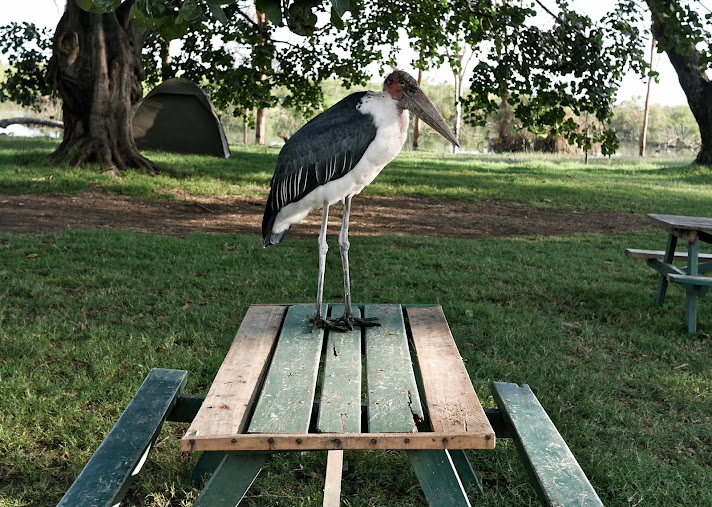
Hell’s Gate National Park was one of the main attractions of this little adventure. We were allowed to ride bicycles right into the park without a guide. Nearly every other National Park won’t even allow a motorbike. We hired some bikes at Fisherman’s Camp rode 5k to the park and another 6k in the park surrounded by warthogs, zebra, and buffalo.

Once deep into the park, we dismounted our bikes and had a wander around the sinuous Lower Gorge Canyon.
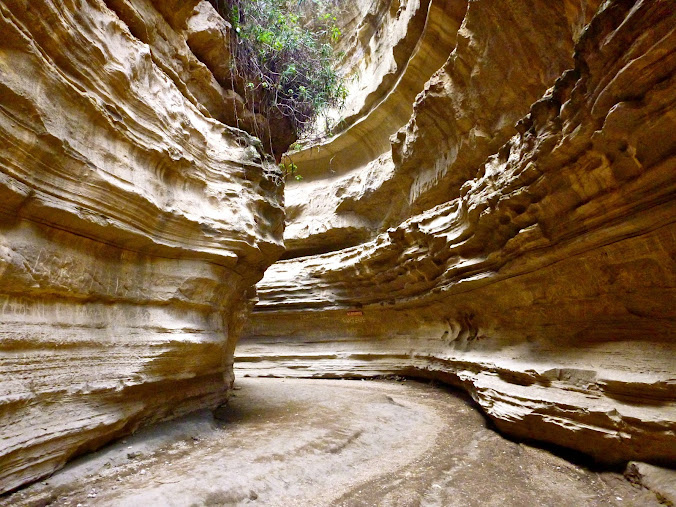
When you are promised hot springs sometimes it is just a hot spring. There was no soaking here.

And we finished off with a bike ride home.

Back in Nairobi, and still waiting for our passports so we managed to fill the time with cuddly wildlife.
Baby elephants!! The David Sheldrick Wildlife Trust, located just a couple miles from our Nairobi home, takes in orphaned baby elephants and raises them to the age of three. At three years the elephants are weaned and moved to another facility in a national park to be reintroduced to the wild.

The youngest baby elephants are fed milk on demand day or night. The older elephants receive milk approximately every 3 hours.

Young Rothschild Giraffes!! The Giraffe Center, just around the corner from our place in Nairobi, was started in 1979 to help pull the Rothschild Giraffes from the brink of extinction. Here we were allowed to feed the giraffes food pellets. The giraffes would allow us to pet them or even kiss them as long as we had food pellets. We made momentary fickle friendships.



Local, wild warthogs decided to join the party. I hear a giraffe center is a great place to raise your young.

Finally, since reminders of the Danish Author Karen Blixen have been everywhere since we entered Kenya from the Karen Blixen Café in Malindi Bay to the Karen District we have been staying in since we arrived in Nairobi, we watched the film “Out of Africa” and then paid a visit to Karen Blixen’s historic home where her famous novel was set.

Our stay in Nairobi has been better than we had hoped but the fancy malls, fancy coffee shops, light-speed internet, and daily hot showers are starting to wear on us. We are ready to hit the road and meet our next challenges.
|
|
Currently Active Users Viewing This Thread: 1 (0 Registered Users and/or Members and 1 guests)
|
|
|
 Posting Rules
Posting Rules
|
You may not post new threads
You may not post replies
You may not post attachments
You may not edit your posts
HTML code is Off
|
|
|
|
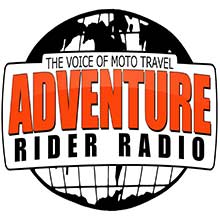
Check the RAW segments; Grant, your HU host is on every month!
Episodes below to listen to while you, err, pretend to do something or other...

2020 Edition of Chris Scott's Adventure Motorcycling Handbook.
"Ultimate global guide for red-blooded bikers planning overseas exploration. Covers choice & preparation of best bike, shipping overseas, baggage design, riding techniques, travel health, visas, documentation, safety and useful addresses." Recommended. (Grant)

Led by special operations veterans, Stanford Medicine affiliated physicians, paramedics and other travel experts, Ripcord is perfect for adventure seekers, climbers, skiers, sports enthusiasts, hunters, international travelers, humanitarian efforts, expeditions and more.
Ripcord Rescue Travel Insurance™ combines into a single integrated program the best evacuation and rescue with the premier travel insurance coverages designed for adventurers and travel is covered on motorcycles of all sizes.
(ONLY US RESIDENTS and currently has a limit of 60 days.)
Ripcord Evacuation Insurance is available for ALL nationalities.
What others say about HU...
"This site is the BIBLE for international bike travelers." Greg, Australia
"Thank you! The web site, The travels, The insight, The inspiration, Everything, just thanks." Colin, UK
"My friend and I are planning a trip from Singapore to England... We found (the HU) site invaluable as an aid to planning and have based a lot of our purchases (bikes, riding gear, etc.) on what we have learned from this site." Phil, Australia
"I for one always had an adventurous spirit, but you and Susan lit the fire for my trip and I'll be forever grateful for what you two do to inspire others to just do it." Brent, USA
"Your website is a mecca of valuable information and the (video) series is informative, entertaining, and inspiring!" Jennifer, Canada
"Your worldwide organisation and events are the Go To places to for all serious touring and aspiring touring bikers." Trevor, South Africa
"This is the answer to all my questions." Haydn, Australia
"Keep going the excellent work you are doing for Horizons Unlimited - I love it!" Thomas, Germany
Lots more comments here!

Every book a diary
Every chapter a day
Every day a journey
Refreshingly honest and compelling tales: the hights and lows of a life on the road. Solo, unsupported, budget journeys of discovery.
Authentic, engaging and evocative travel memoirs, overland, around the world and through life.
All 8 books available from the author or as eBooks and audio books
Back Road Map Books and Backroad GPS Maps for all of Canada - a must have!
New to Horizons Unlimited?
New to motorcycle travelling? New to the HU site? Confused? Too many options? It's really very simple - just 4 easy steps!
Horizons Unlimited was founded in 1997 by Grant and Susan Johnson following their journey around the world on a BMW R80G/S.
 Read more about Grant & Susan's story
Read more about Grant & Susan's story
Membership - help keep us going!
Horizons Unlimited is not a big multi-national company, just two people who love motorcycle travel and have grown what started as a hobby in 1997 into a full time job (usually 8-10 hours per day and 7 days a week) and a labour of love. To keep it going and a roof over our heads, we run events all over the world with the help of volunteers; we sell inspirational and informative DVDs; we have a few selected advertisers; and we make a small amount from memberships.
You don't have to be a Member to come to an HU meeting, access the website, or ask questions on the HUBB. What you get for your membership contribution is our sincere gratitude, good karma and knowing that you're helping to keep the motorcycle travel dream alive. Contributing Members and Gold Members do get additional features on the HUBB. Here's a list of all the Member benefits on the HUBB.
|
|
|





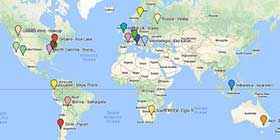









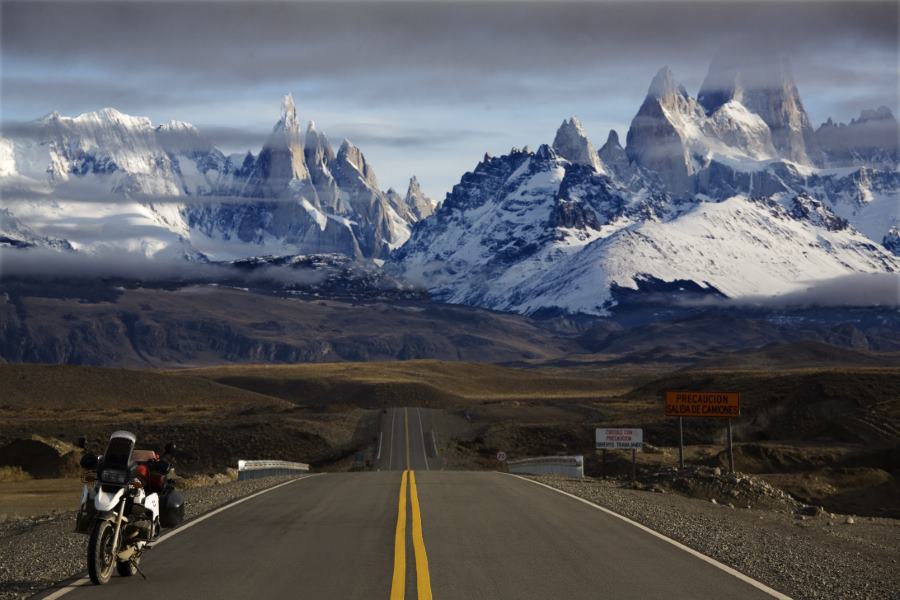

 134Likes
134Likes














 Hybrid Mode
Hybrid Mode









